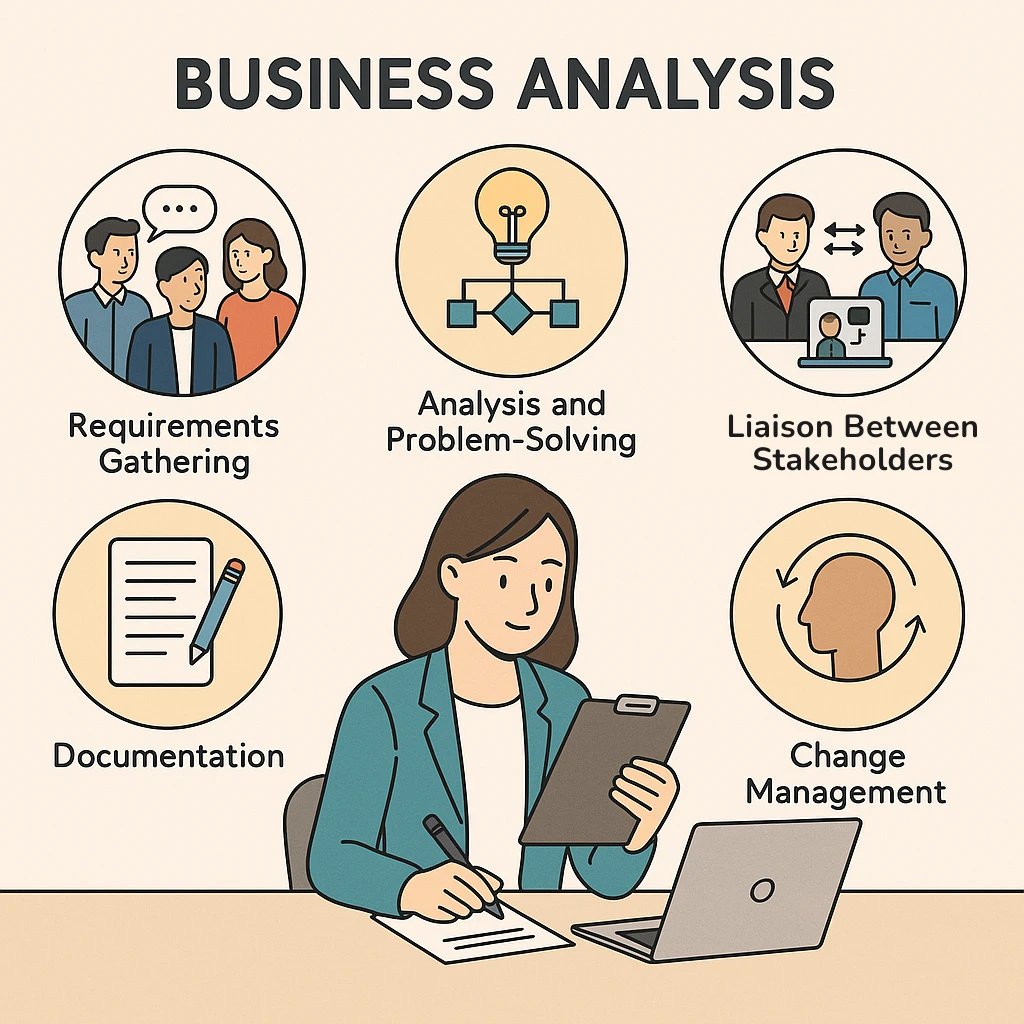## Level Up Your Career: A Day in the Life of an IT Business Analyst at Harvard Business School
Imagine this: You’re not just playing a game, you’re shaping the very systems that power a global institution. You’re not just strategizing moves, you’re analyzing data to optimize the future of business education. Welcome to the life of an IT Business Analyst at Harvard Business School, where every day is a quest for innovation and efficiency.

The Power of Structure

In the dynamic world of technology, where innovation moves at a rapid pace, a structured approach is paramount. IT business analysts, the architects of clarity within IT projects, bring this essential structure to the table. They act as the bridge between technical complexities and business objectives, ensuring that projects are implemented effectively and deliver tangible value.
Ryan Conwell, manager of the IT Business Analysis team at Harvard Business School (HBS), emphasizes the crucial role of structure in project success. “Business analysts bring a more structured approach to implementation and other parts of improvement projects,” he explains. “We help the organization consider options to solve a problem and allow for informed decision-making.”

A Day in the Life: Following Conwell’s Schedule
The day-to-day life of an IT business analyst at HBS is a tapestry woven with diverse tasks and responsibilities. Conwell highlights that the role is inherently dynamic, adapting to the unique needs of each project and team.
Morning Rituals
The morning routine for a business analyst typically involves a meticulous review of schedules, emails, and planning the day’s tasks. Conwell explains, “I usually start my mornings by understanding what the meeting schedule for the day looks like and seeing what emails came over night. I plan out the day to see what work needs to happen today or the rest of the week. I may also attend team meetings or meet with other project teams.”
Project-Driven Work
The afternoon unfolds as a series of meetings, collaborations, and focused work sessions. Conwell elaborates, “If I’m not in meetings, I’m just trying to figure out what would be the plan for tomorrow or the rest of the week or next week. If I attended a project team meeting in the morning, I might then work on a deliverable or collaborate with someone on the team—working with them one-on-one or discussing through chat to figure out whether we need to do more research or documentation, and then addressing what path we need to go down.”
The nature of the work directly influences the day’s activities. For example, if a morning meeting focuses on project execution and involves training or feedback, the afternoon might be dedicated to working with the project execution team to refine documentation and ensure they have the necessary information to answer questions effectively.
Preparing for Tomorrow
Conwell emphasizes the importance of end-of-day planning for a smooth transition into the next day. He states, “At the end of the day, I definitely make sure I’m set up well for the next morning so I don’t have any surprises when I open up the computer, and I make sure I understand the schedule and that nothing will be missing from them. I’ll then go back through my inbox to make sure there’s nothing I’m skipping over or someone I need to connect with.”
Gamestanza Takeaway: The Appeal of the IT Business Analyst Role
The IT business analyst role at HBS, and in organizations like it, offers a compelling blend of challenge, impact, and growth potential.
A Catalyst for Change
Conwell underscores the role’s importance in driving positive change and innovation: “We bring a more structured approach to implementation and other parts of improvement projects. We help the organization consider options to solve a problem and allow for informed decision-making.”
Business analysts act as catalysts, identifying areas for improvement, proposing solutions, and ensuring that technology initiatives align with the broader organizational goals. Their ability to bridge the gap between technical and business domains is invaluable in today’s rapidly evolving technological landscape.
A Career with Impact
The impact of an IT business analyst’s work is directly measurable. Conwell explains, “Business analysis helps us deliver better projects and products to our customers across the community. We bring a more structured approach to implementation and other parts of improvement projects. Boiling our skill set down to the basics, we help the organization consider options to solve a problem and allow for informed decision making.”
Decisions made by business analysts directly influence the success of projects, the efficiency of operations, and ultimately, the satisfaction of users and the entire HBS community.
A Path for Growth
The IT business analyst role offers a clear path for career growth. As Conwell notes, “Since I’m the manager of the team, I spend more time keeping track of what is going on across IT as a whole to see if there are areas where we can help. In situations where I’m working as a business analyst, I tend to spend more time working on documentation and working with that project team directly.”
Business analysts can progress into leadership positions, specializing in specific areas of IT, or even transitioning into other roles within the technology field. The transferable skills gained in this role—analysis, communication, problem-solving, and project management—are highly valued across various industries.
Conclusion
Conclusion: Unlocking the Secrets of a Day in the Life of an IT Business Analyst at Harvard Business School
As we conclude our comprehensive exploration of a day in the life of an IT Business Analyst at Harvard Business School, it’s clear that this role is more than just a job – it’s a dynamic fusion of business acumen, technical expertise, and strategic thinking. Through our article, we’ve delved into the intricacies of a typical day, highlighting the importance of effective communication, problem-solving, and collaboration. From analyzing business requirements to collaborating with stakeholders, we’ve seen firsthand how IT Business Analysts at Harvard Business School are the linchpin that keeps the organization running smoothly.
The significance of this role cannot be overstated, as it has far-reaching implications for the success of any organization. As technology continues to transform the business landscape, the demand for skilled IT Business Analysts will only continue to grow. Our article has provided valuable insights into the skills required to excel in this role, from proficiency in data analysis to the ability to navigate complex technical systems. As we look to the future, it’s clear that the role of the IT Business Analyst will become increasingly critical in driving business innovation and growth.
As we conclude, one thing is certain: the world of IT Business Analysis is not just about crunching numbers and writing reports – it’s about shaping the future of business. As Harvard Business School’s IT Business Analysts continue to push the boundaries of what’s possible, they inspire us to think differently about the role of technology in driving success. And as we look to the future, we’re reminded that the possibilities are endless – and that’s the greatest challenge of all.